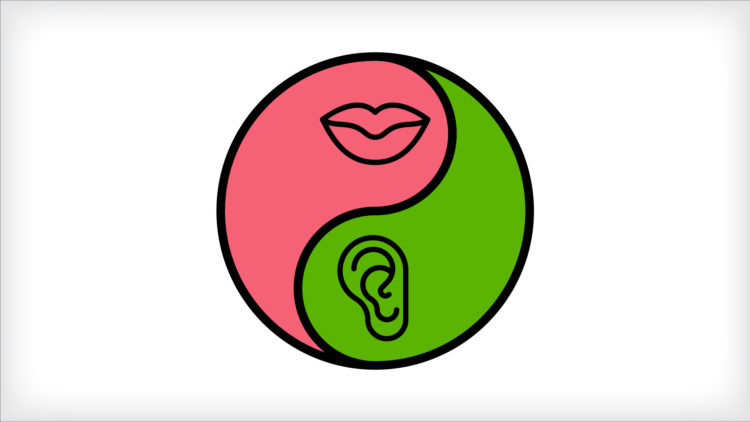





Making Sense of Self-Care
An Integrative Health Program to Engage Your Senses. This Week: Taste
First time here? Make sure to read the introduction to the series!

Action of the Week
This Monday, be a detective to use awareness of all of the senses to enhance your sense of taste. Believe it or not, this may also improve your digestion! Let’s use eating an apple as a simple example of how you can do this. But you can also use any food of your choosing.
- Buy yourself a big red (or any color) apple: Before you eat it, heighten your keen “detective” sense of awareness by reducing or removing all other distractions, such as shutting off the television and putting your phone away.
- Now sit comfortably with the beautiful red apple in front of you. Let your eyes rest on it, noting the smooth texture and how the light hits the apple skin, as you take three slow intentional breaths. With every breath, become aware of how the breath feels as it expands in your body on the inhale and how your body releases and relaxes on the exhale. Use this time to check in with how you are feeling as you create a sense of calm in your body and spirit.
- Now pick up the apple and notice every little detail from the stem to the bottom as it sits in your hand. Where does the texture feel smooth? Does it look shiny or dull in the light? Observe the shape, completely taking in all of the natural curves and color variations.
- Just before you take your first bite, pause and intentionally close your eyes. Breathe in its delicious aroma. You may even notice how this begins to stimulate the salivary glands in your mouth as your body moves into “digestion” mode.
- Take your first bite, mindfully aware and listening to hear the crunch of your teeth sinking into the apple as you experience the first burst of flavor. Notice as your tongue tastes all the layers including the plainer taste of the apple skin and the juicy inner sweetness. How does the texture feel in your mouth as you begin to chew and move it through your teeth and tongue?
- Does the flavor change as the texture softens? Notice the familiarity of this taste and if it actually invokes any memories – hopefully ones that grow a smile on your face!


Taste and Sight
Color Therapy: Take note of the colors of the foods and beverages you consume each day. As you, begin to see patterns in your food see if you can add a greater variety of colors to your diet.


Taste and Touch
Acupressure: Spleen 3 – Taibai is an acupressure point located on the side of your big toe just above the “big bump” or bunion. This point is part of an energetic channel that harmonizes the digestion. Apply one to two minutes of mild to moderate pressure before your next meal and experience a heightened sense of taste.


Taste and Hearing
Music Therapy: The next time you are at a restaurant or eating at home, consider the sounds around you and their influence on your gustatory food properties (sugar level, salt level). Woods et al. (2011), asked participants to eat chips and cookies while listening to white noise at either high or love volumes or in silence. They found that eaters perceived saltiness and sweetness as less intense when they ate the food in the presence of loud background noise, as opposed to eating in quieter or no background noise.


Taste and Smell
Aromatherapy: Peppermint is an essential oil known to freshen the breath and aid in digestion. Apply one to two drops of peppermint oil on a cotton ball. Take five deep breaths and experience the cooling cleansing sensation through your nostrils.
From the Experts
It’s no secret that taking three authentic, slow, mindful breaths could help our bodies calm down and move from “fight/flight mode” into “rest/digest mode.” But did you know that by doing this, we reap other benefits too?
- When you fully pay attention to eating by taking three slow breaths to help you relax and focus, your body is better able to absorb the nutrients of the food you’re eating. This is because the digestive chemicals the body uses are now properly activated. They don’t work as well when you eat while you are distracted or stressed out. (M. David, 2015).
- With increased awareness of your body and your actions, your brain actually pays closer attention to what you are doing. This enhances your senses, especially taste, which increases your enjoyment of the food.
- Experiencing the food with enhanced awareness of taste also helps your brain register the nutrients you are absorbing by eating that particular food. This kind of awareness helps the brain know when your body is satisfied and may stop you from overeating or craving those tastes or foods in the future.
- When you invite your mind to be an active detective that is determined to discover each flavor emerging from the foods you eat, every meal and each snack becomes a fun adventure.
Resource Links
- Emily Rosen (n.d.). The Metabolic Power of Awareness, Institute for the Psychology of Eating. https://www.youtube.com/watch?v=xLLNjjLOJW4
- Cherpak, C.E. (2019). Mindful eating: A review of how the stress-digestion-mindfulness triad may modulate and improve gastrointestinal and digestive function. Integrative Medicine, 18(4), 48-54.
- David, M. (2015). The Slow Down Diet: Eating for Pleasure, Energy & Weight Loss (10th Anniversary Ed.). Rochester, VT: Healing Arts Press.